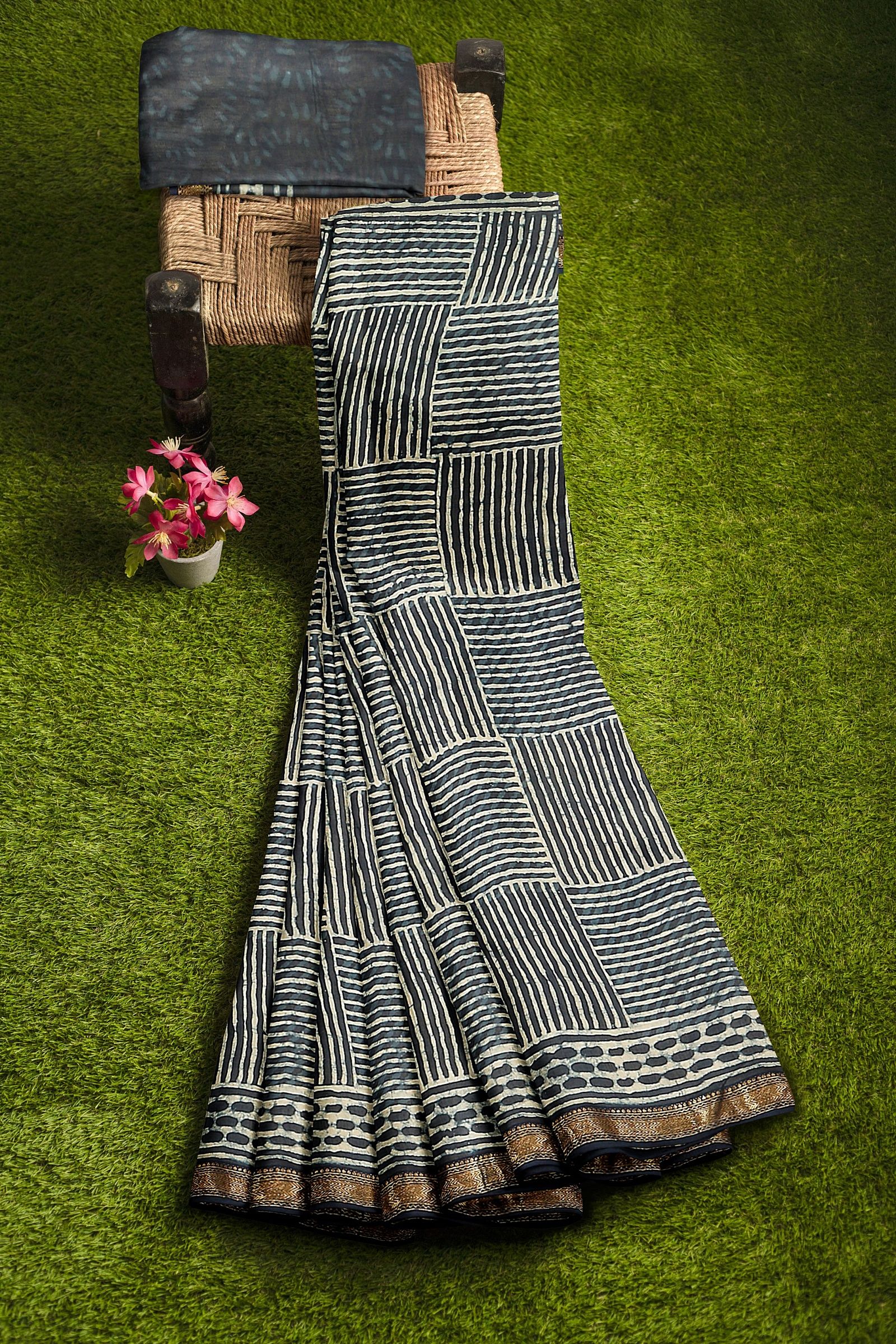
India has many states, languages, cultures, cuisine, a long history, and one of the oldest handloom industries. The Indian handloom industry is unlike any other mainly because of the numerous beautiful handprints ingrained in Indian culture. We will talk about one such handprint - the Dabu handprint.
Dabu or Bagru Print is a form of hand block printing done by natural colours followed by the Chippa's in Bagru, India. The Chippa community of Rajsthan are involved in fabric printing tradition for over 100 years. These prints of Bagru are acclaimed all over world. The Prints of Bagru, unlike other prints, involve a different kind of printing. The unique method for printing employs wooden block in it. In this process, the desired design is engraved first on wooden block and then carved block is used for replicating the design in the preferred color on the fabric. The practice of this art is now being revived with the help of NGOs and authorities.
Rajasthan is the state where Dabu print started blooming. With the increase in trade, dabu handprint progressed to India as well as foreign countries. The block handprint art became the symbol of art for the state of Rajasthan. Rajasthan was then one of the most profuse producers of hand-printed fabrics.
Dabu is derived from dabana meaning to press. The art that attracted numerous practitioners, artisans and customers now only has a few artisans. The number of dabu artisans has over the years dwindled. The Akola village in the district of Chittorgarh of Rajasthan is largely accepted as the prime mover of dabu handprint.
Dabu handprint is a mud resistant hand block printing. It is labour intensive and has a long process involving multiple steps. The process begins by washing the plain fabric received from the mills, this is done to remove any excess dye or impurities from the fabric. After drying the fabric, artisans then use wooden blocks dipped in natural dyes to handprint the designs on the plain fabric.
The key step which makes dabu block printing stand out from the rest of the handprints, is the preparation and use of mud resist mixture. The Mud resists mixture or paste is made by combining lime, gum, mud and wheat chaff. The paste is then dabbed on the fabric and left to dry. The fabric is soaked into the vat of dye and washed to remove excess paste and dye. The fabric is then let to be dried.
The high-quality natural dyes and intricate motifs used by the Akola artisans make it the heart of Dabu print. The handprint which is famous all over India is practised largely in Rajasthan although various small clusters are emerging across India that are practising this art. Some of the famous designs are Dabu and Bagru handprints, Chanderi cotton dabu handprints, and Kota Doriya dabu handprints.
Dabu handprint has gained immense popularity in India and across the world. The intricate designs and dye derived from vegetables makes the print favourable in the global market. The art has also evolved to include different fabrics to target all sections of the market. From the traditional cotton and silk to the georgette and crepe.
Dabu print is considered to represent India’s Heritage on a global scale. The demand for the mud resist print has steadily increased and is expected to grow at a faster pace. The reasons for the growth can be the wide variety of colours, fabrics, motifs and apparel which don these prints. Add to these the need for sustainable and eco-friendly fashion has made this art flourish.
Nirguna has been striving to revive the lost forms of designs and crafts. We provide a platform for the local artisans to reach out to a wider audience and gain recognition, appreciation and remuneration for their dextrous craft. Nirguna collaborates with local weavers and artisans and also documents the dabu handprint to reserve and record the arts’ evolution. We also undertake various campaigns, workshops and events to market the craft thereby contributing to uplift and empower them.